9 Customer Retention Strategy Examples
Example 1: Run a Loyalty Program (REI)

One of the most tried-and-true methods for creating repeat customers is giving them a reason to be loyal to your brand. Customer loyalty programs come in all shapes and sizes, but all of them offer some kind of perk or benefit to incentivize existing customers to make repeat purchases.
A longstanding example of a loyalty program that has been tremendously successful is REI’s Co-op membership program.
REI is an outdoor equipment retailer and online seller. Anyone can walk into an REI shop or visit the company’s website to make a purchase, and when they do, they’ll be prompted to add an REI membership to their checkout cart.
REI’s membership actually costs money (many loyalty programs are free), but customers go for it anyway because it offers meaningful benefits, including a percentage of the money you spend each year back in store credit, access to exclusive gear, discounts on bike and ski tuning, etc.
Underlying this strategy is solid email marketing that includes reminders and notifications about rewards balance, expiring rewards, and more — all designed to lower customer churn and increase customer lifetime value by reminding people there are good reasons to come back.
This is a highly successful customer loyalty program because it offers meaningful benefits and incentivizes customer engagement by giving members a good reason to choose REI over competing shops when they (for example) need their bike fixed or need a new pair of skis.
That’s just one example, of course — there are many, many different ways to run a customer loyalty program. Whatever approach you take, it’s important to keep in mind that programs like REI’s work because they offer real value to their members.
Example 2: Offer Omnichannel Customer Service (Nike)
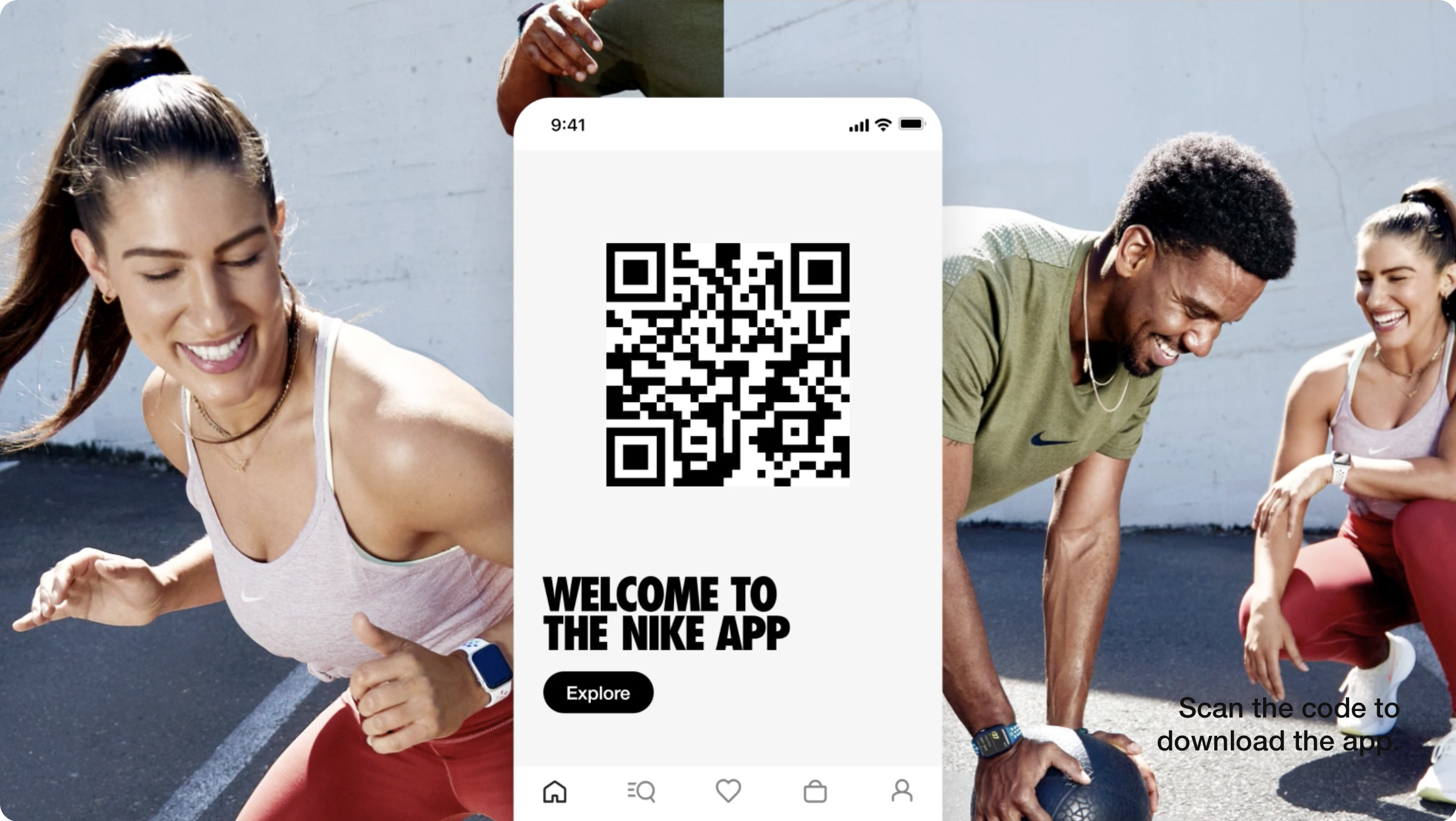
Nothing turns a loyal customer into an angry ex-customer quite as quickly as bad customer service.
And while no company sets out to provide poor service, in this era of social media and instant gratification, customer expectations are sky-high. To build a meaningful customer relationship, you have to be where your customers are.
If you’re a big brand like Nike, “where your customers are” is everywhere, so you want to offer them a good customer experience everywhere.
Nike’s omnichannel approach to retaining customers merges the real world with the digital. Its suite of apps offer a wide variety of features, and factor in user location to do things like make gear recommendations and even help customers navigate nearby Nike retail locations.
But offering omnichannel service isn’t just about that kind of fancy technology. While the company offers customer support in the traditional ways — help articles and live customer service chat on its website — it also does more.
On Twitter, for example, Nike operates a dedicated support account to answer questions, offer customer service, and respond to customer complaints.
This kind of strategy is sure to improve customer satisfaction and retention rate because it’s a better experience for many users, who are already on Twitter anyway and would rather tweet at Nike’s handle than have to go digging for support information on its website.
The lesson here is that you can increase your customer lifetime value by always being where your customers are. Build an app that enhances their shopping experience or their use of your products. Be on social media so customers can find you when they have problems.
Simply being there more is a surefire way to increase purchase frequency for your existing customers and because you’re so visible across many different channels, you’ll likely attract some new customers, too.
Example 3: Create Interactive Educational Content (Ikea)
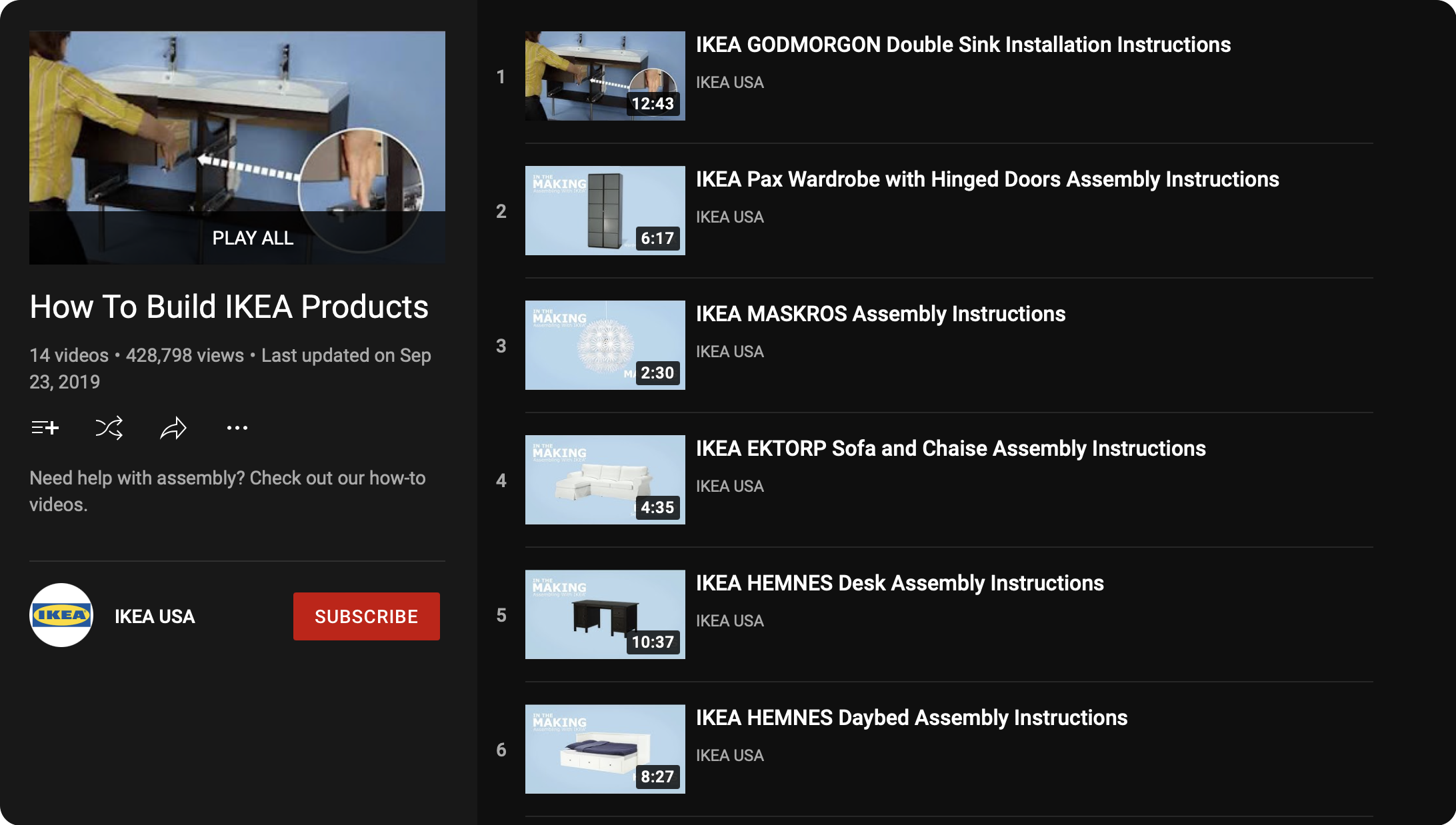
If your goal is increasing customer retention, here’s a pro tip: You can’t just think about customer support, you have to think about customer success. (This helps with customer acquisition too).
Support isn’t enough because for every customer complaint and query you get, there are likely other customers who’ve encountered issues with your product but haven’t contacted support. To build a customer base with true brand loyalty, you have to make it easy for customers.
For some products, this is easier than others. If you sell pencils, you probably won’t have to do much, as everyone is already familiar with how they function. But most products are more complex and less ubiquitous. Some education is required.
Consider, for example, Ikea. The low-cost, high-quality furniture brand has a flock of loyal customers because Ikea makes it easy to understand how to choose furniture that’ll fit their room, and how to assemble it once it gets there.
On its website, the company has interactive design tools that allow you to visualize how an item might look in your own space, and get a better feeling for the space it takes up.
And although every product comes with clear instructions, Ikea also produces video tutorials, published on Youtube and elsewhere, to give visual learners a better idea of how the assembly process for popular items should go.
Tools like these help customers choose the right furniture for their room and put it together with minimal hassle. It’s a customer retention program that works by turning unique customers into repeat customers by showing them it’s easy to succeed when you buy this brand.
Example 4: Keep in Touch With Newsletters and Emails (Robinhood)

At most businesses, email marketing is critical to keeping your client retention rate high. It’s an easy way to keep in touch with existing customers, build trust with new ones, and remind all of them how great your products are.
The key to good email marketing is that to work well, it has to offer some genuine value. It should be something that loyal customers really want to see, and it should arrive at a frequency that’s appropriate (based on your typical customer journey and purchase frequency).
One example of email marketing done right is Robinhood’s “Robinhood Snacks” newsletter. It’s a daily email that goes out to Robinhood customers, and it contains amusing images, major stock moves, a quick news summary, and then some more in-depth stock-related stories.
It’s a pretty lengthy newsletter, especially for a daily read, but it’s written in a fun, engaging style, and it’s full of bullet points and “takeaways” that make it very easy to scan.
A daily newsletter would be a bit much for many businesses, but Robinhood knows its customers; individual investors who want to feel like they’re in the know, but also want information presented to them in a way that’s simple, clear, and fun.
And that’s really the key to any kind of email marketing: It’s only going to work if you’re giving your customers something that they actually want.
Example 5: Collect and Use Feedback (Nordstrom)

Retaining customers is really difficult to do if you don’t know how your customers are feeling about your brand and products. The easiest way to find that out? Ask them.
You’re probably already sending an email to customers to ask them for a 0-10 rating for your net promoter score (NPS). That’s important, but it doesn’t often give you the detail you need to really understand your customer expectations and how to prevent customer churn.
One example is the retail chain, Nordstrom. Nordstrom collects customer feedback in a wide variety of ways. Like most e-commerce sites, it actively solicits user reviews of its products, but it also prompts some users to answer feedback surveys when they’re just browsing the site.
Getting this kind of before-purchase feedback can help Nordstrom better understand the customer journey and see what separates casual browsers from loyal repeat customers.
Simply collecting that feedback on its own isn’t enough to impact the retention rate, though. Nordstrom employs a data science team to help crunch the numbers, but also to make sure that as much customer feedback data as possible is accessible to all employees.
Allowing more employees to see and understand customer feedback, rather than keeping that data siloed within the data team or only sharing it with top execs, allows Nordstrom employees to innovate, finding new ways to improve the customer experience and generate loyalty.
When you’re devising your own customer retention strategy, remember Nordstrom’s approach: collecting the information alone is not enough. The more widely you can share it, the more improvements and solutions your team can generate.
Example 6: Thank Your Customers (Zappos)
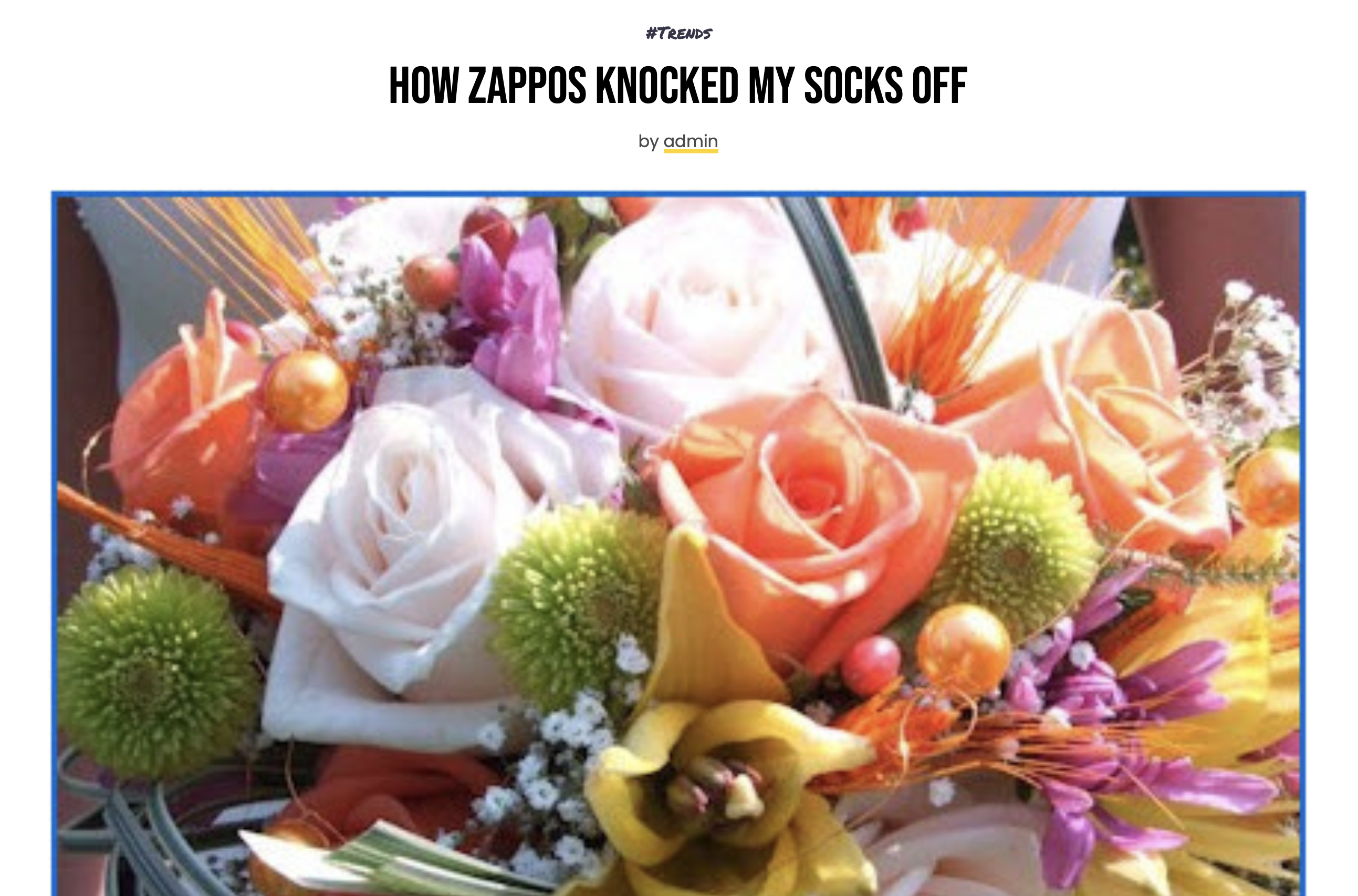
It might sound obvious, but in this digital age, it’s easy to forget: When customers are making purchases, especially repeat purchases, from your site, say thank you!
The easiest way to do this is with a simple, “Thanks for your order!” popup or email message, of course. But if you really want to build customer loyalty, you’ll want to do something even bigger to stand out, particularly for your best customers.
Online shoe retailer, Zappos, for example, has prioritized customer service and empowered its phone agents to do more than just regurgitate a script, in part, because it allows them to show customers their appreciation in more meaningful ways.
For example, after one Zappos shopper commiserated with a customer service representative about an illness, the customer service rep sent the shopper flowers.
When the shopper’s daughter emailed Zappos to thank them for being so thoughtful, Zappos made both her and her mother VIP members, entitling them to free expedited shipping.
Above and beyond the call of duty? Perhaps. But both the mother and the daughter swear that now, they only buy shoes from Zappos. A little bit of thankfulness and kindness created two customers for life.
The Zappos story demonstrates that the best way to thank your customers often isn’t to say thanks, it’s to show thanks by giving them something they value. That costs time and sometimes money upfront, but it pays dividends in the long run by increasing your customer lifetime value.
Example 7: Incorporate Subscriptions (Amazon)
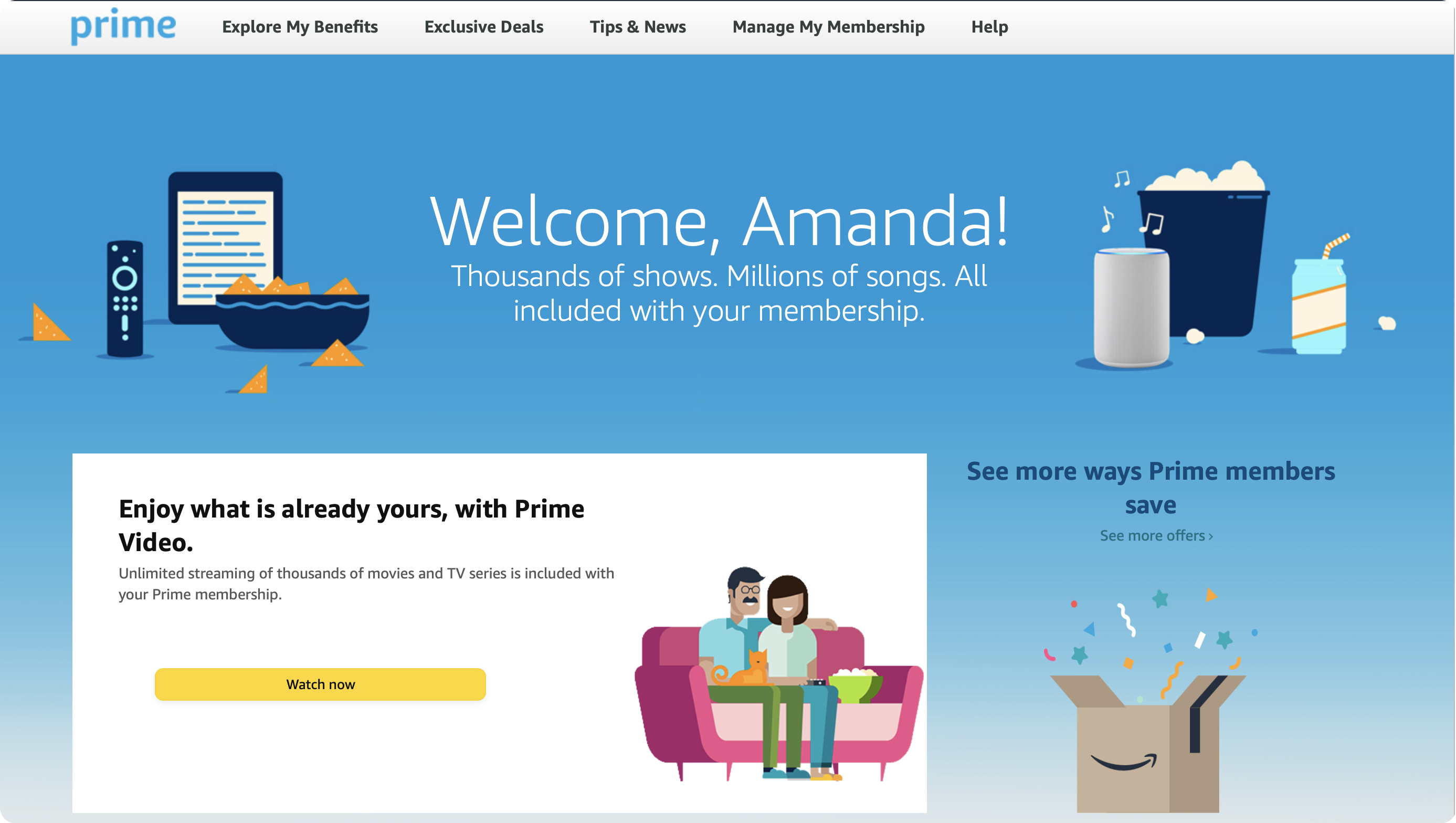
Up to this point, we’ve primarily discussed how to increase customer retention rate through giving customers things they want and providing above-and-beyond customer service. But you can also take advantage of psychology to help keep customers around.
One way to do this is through subscriptions. If you can get a user to subscribe to something, you’ve got a good chance of keeping them in the long term, for reasons related to human psychology.
One reason is called status quo bias. As humans, we tend to stick with things the way they are, and it takes a little push or inspiration to get us to make changes.
Therefore, if you can get a customer to subscribe, there’s a good chance they’ll stay subscribed, sticking with the status quo. At least until they have some kind of negative experience that gives them the little “push” needed to make a change.
Another reason is called loss aversion: People feel the pain of losing something twice as strongly as they feel the pleasure of gaining something. In other words, when you have something (like a subscription that gives you some kind of benefit), you don’t want to lose it!
For these reasons (and many others), even retailers like Amazon have made subscriptions a part of their customer retention strategy.
By signing customers up for Prime, for example, Amazon generates additional revenue from the subscription fee while simultaneously increasing the chances the subscriber will buy things from Amazon (since the subscription’s value comes largely from the free shipping).
Adding a subscription model to your business means that you’ll need to be tracking data effectively so that you can monitor and analyze customer churn, but tools such as Woopra make this quite straightforward to accomplish.
Example 8: Personalization Through Predictive Analytics (Spotify)
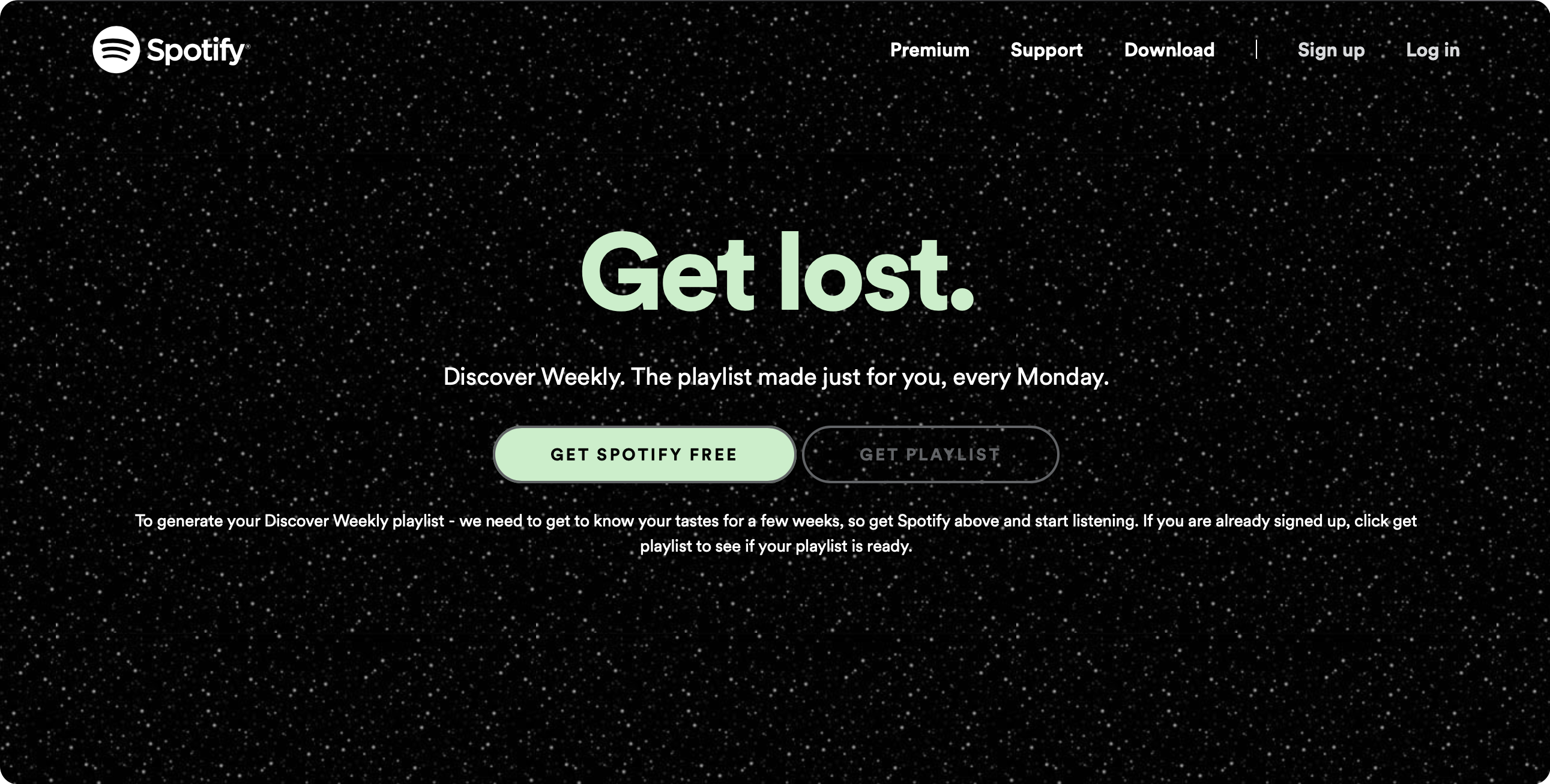
Another great way to boost customer loyalty is through the use of predictive analytics that can offer users a personalized experience.
For example, music streaming service Spotify employs predictive analytics heavily almost everywhere in its application to make sure that when a user wants to keep listening, they can always find something new.
For example, on opening the app, the user may see made-for-them playlists such as “Discover Weekly”, a customized, predictive analytics-driven playlist of music that Spotify thinks that particular user might like.
Even a user’s own playlists get a dash of the predictive power of machine learning. At the end of every user-created playlist are at least five songs Spotify’s algorithm recommends they might like to add, based on the songs that are already on that playlist.
The goal here is to keep users listening by always ensuring they have fresh music they might like to try out. The longer Spotify can keep users listening, the greater its customer retention will be.
Predictive analytics can play a role in the retention strategy of almost any business. In Spotify’s case, the primary goal is to keep users on and coming back to the app. But there are other uses as well.
For a retail company, for example, predictive analytics could be used to recommend other items a customer might like based on their cart or past purchases.
Or it can be used as part of a content marketing strategy; for example, to suggest content an individual user is likely to be interested in, based on their previous browsing history and purchases.

Another way you can improve your customer retention is to build a community for your customers. Create a situation in which they’ll keep coming back because of each other.
Consider, for example, the popular exercise bike app Zwift. Riding an exercise bike is an inherently boring activity for most people. Zwift built a game that makes the experience much more engaging, but the true value of Zwift is that it’s also a community.
As soon as you start up the app for a workout, you’re presented with a list of current riders and any friends you’ve added will be right at the top of that list. Riding with a friend is as simple as tapping their name.
Once you’re riding with friends, you can chat with them (and with friends on other rides) using the app’s text chat feature, or via voice chat through discord integration. The app also has community events, badges, and much more to help you enjoy riding with others.
Building a community is a great way to increase customer loyalty because it’s really something that your users will do for themselves, provided your application is good and your users are given the tools they need to interact and communicate in a way that’s fun and safe.
Building a community isn’t always as easy as it sounds, though, even if you already have a solid user base. You can’t just slap social media features onto any product and expect a community to emerge.
To build a community that keeps users coming back, you’ll have to put a lot of thought into why current customers value your product and how community features can be integrated in a way that makes sense.
Optimize for Conversion & ROAS Now! Explore Woopra in a demo and enjoy a 2-week free trial: https://www.woopra.com/demo
Key Customer Retention Metrics
Of course, implementing a customer retention strategy is really just step one. You also have to be able to measure how well that strategy is working so that you can iterate on it and improve it. And that, in turn, means tracking, recording, and analyzing key customer retention metrics.
Customer Retention Rate
The first, and most important, is your customer retention rate itself. If you can’t track this figure over time, it will be very difficult to determine whether your retention efforts are actually paying off.
Customer retention rate is the percentage of customers who are still customers after a specific period of time has gone by. For example, a subscription service might measure the monthly customer retention rate, i.e. the percentage of customers who don’t cancel each month.
Tools like Woopra can track this and visualize it for you automatically, but if you’re building a bespoke solution, the formula is pretty simple:
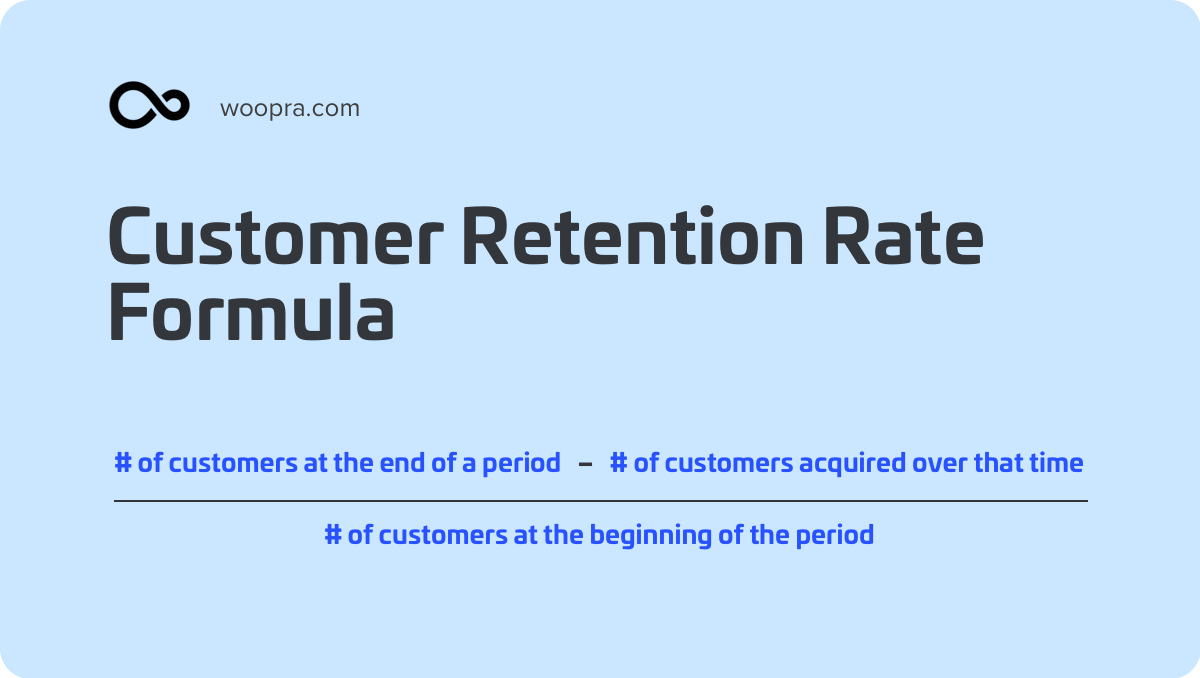
Different companies and different industries may want to measure customer retention over different periods of time. You may choose to look at weekly, monthly, quarterly, or yearly retention rates, depending on the nature of your business.
Although it sounds straightforward, measuring customer retention rate requires tracking users at the individual level over time so that you know each individual’s status and can track changes, such as new purchases or subscription cancellations.
If you’re using a tool, such as Woopra, to track your entire customer journey, then you already have this tracking in place, as its event-based, user-level tracking stores all the details you need about any actions your customers take.
Keep in mind, also, that you’ll need to ensure any data you’re tracking is stored for an appropriate amount of time. If you’re tracking yearly retention rate, but your tracking tool only offers six months of data storage, you’ll need another storage solution or to choose a new tool.
Customer Churn Rate
Customer churn rate is the opposite of customer retention rate. It measures the percentage of customers who churned – customers who canceled subscriptions or failed to make repeat purchases – over a set period of time.
>>>>> gd2md-html alert: inline image link here (to images/image11.png). Store image on your image server and adjust path/filename/extension if necessary.
(Back to top)(Next alert)
>>>>>

Again, this is a calculation that a good marketing analytics tool, such as Woopra, will do for you, but the formula for calculating customer churn rate is as follows:
Number of Customers Who Left / Total Number of Customers X 100
For example, a company that started a month with 100 subscribers and ended it with 90 subscribers would have a customer retention rate of 90% and a customer churn rate of 10%.
While both metrics are typically measured over a set period of time, you may want to consider a shorter period of time for tracking churn rate if your chosen period of time for customer retention is long.
That’s because a spiking churn rate can be an indicator of a serious problem. If you’ve got a subscription business and you’re tracking quarterly retention rate, you don’t want to find out at the end of the quarter that a problem caused users to cancel in droves during the first month!
Determining exactly what counts as “churned” and “retained” is straightforward for subscription-based businesses, but it’s worth noting that sales-based businesses will need to do a bit more work to define these metrics.
For some businesses, a purchase a year may be the retention target. For others, a customer who hasn’t made a new purchase in a month may be determined unlikely to ever return, and thus classified as “churned”.
Since every business is different, you’ll likely need to dig into customer behavior data to determine what patterns of purchase indicate churn or retention for your business.
Customer Lifetime Value
Another important metric to track regularly is customer lifetime value. Customer lifetime value (LTV) measures the average amount of revenue a customer generates for your business before churning.
In other words, it’s really just a measure of customer value.
For example, if you have a subscription business that costs $10/month and most customers churn after three months, then your customer lifetime value is $30.
That’s a simple example, but in practice, calculating this can get complicated for many businesses, as customers can do things like change subscription levels, “pause” subscriptions, make one-off purchases, etc.
For this reason, it’s best to use an event-based tracking tool such as Woopra. Woopra can track all of these in-product user events, as well as many of the other interactions customers have with your brand, and calculate your customer LTV automatically.
Retention, churn, and LTV are different customer metrics, but ultimately, they all measure how effectively you’re able to keep customers subscribed (in the case of subscription businesses) or coming back (in the case of sales-based businesses).
When you implement a great customer retention strategy, you should see your retention rate and customer LTV climb and your churn rate drop.
But if that doesn’t happen, don’t panic! Since you’re already tracking these metrics, you can simply modify your approach or try a completely different strategy and see if that has more of an impact.
Over time, you’ll likely come to understand exactly what works best for keeping your customers around. But as you can tell from this article, there are lots of different options out there, so don’t be afraid to experiment!
As long as you’re tracking your data effectively, even a failed strategy will be beneficial because you’ll have gained some quantitative insight on what doesn’t work, which can often point you in the direction of more effective strategies.














